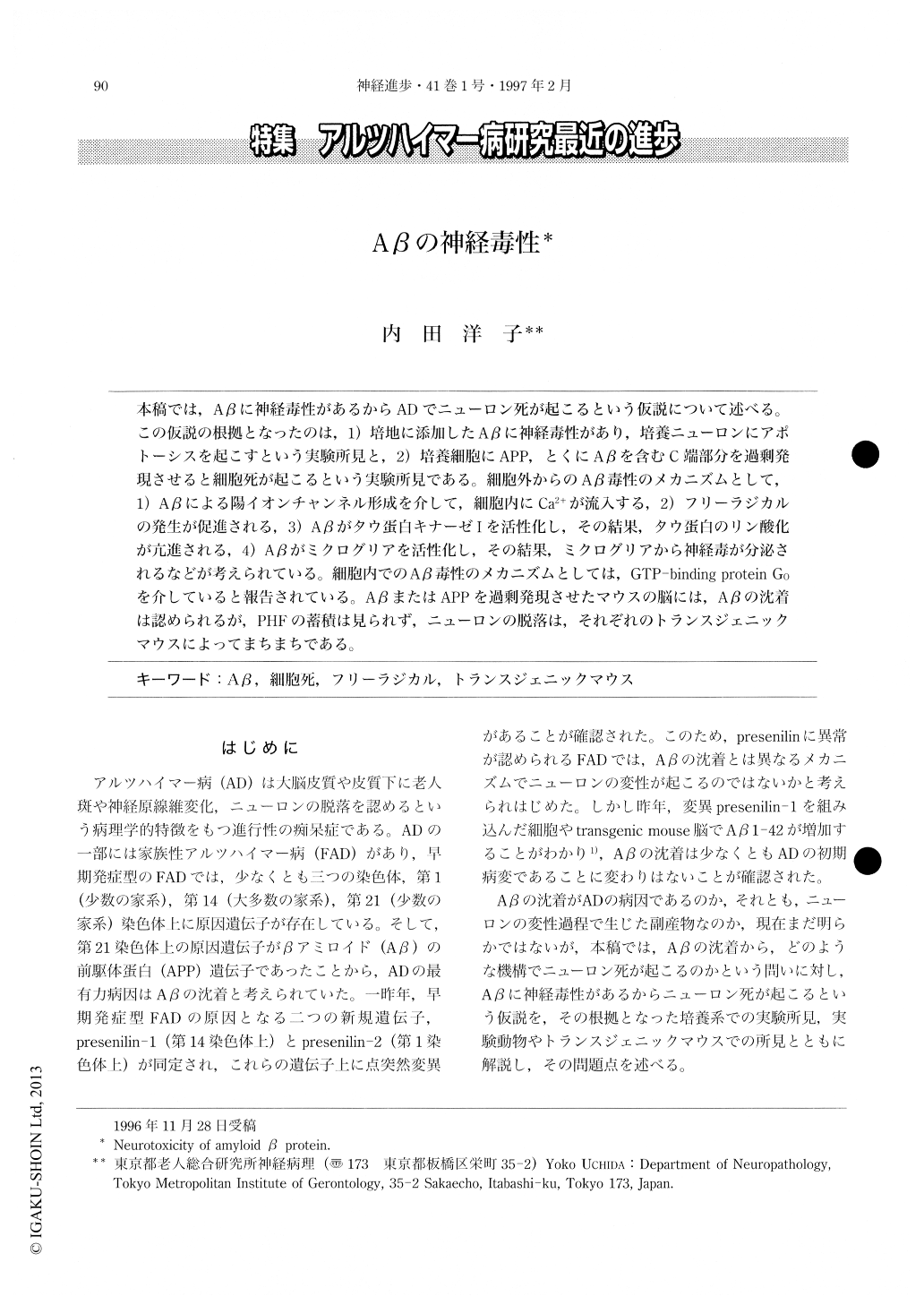Japanese
English
- 有料閲覧
- Abstract 文献概要
- 1ページ目 Look Inside
本稿では,Aβに神経毒性があるからADでニューロン死が起こるという仮説について述べる。この仮説の根拠となったのは,1)培地に添加したAβに神経毒性があり,培養ニューロンにアポトーシスを起こすという実験所見と,2)培養細胞にAPP,とくにAβを含むC端部分を過剰発現させると細胞死が起こるという実験所見である。細胞外からのAβ毒性のメカニズムとして,1)Aβによる陽イオンチャンネル形成を介して,細胞内にCa2+が流入する,2)フリーラジカルの発生が促進される,3)Aβがタウ蛋白キナーゼIを活性化し,その結果,タウ蛋白のリン酸化が亢進される,4)Aβがミクログリアを活性化し,その結果,ミクログリアから神経毒が分泌されるなどが考えられている。細胞内でのAβ毒性のメカニズムとしては,GTP-binding protein Goを介していると報告されている。AβまたはAPPを過剰発現させたマウスの脳には,Aβの沈着は認められるが,PHFの蓄積は見られず,ニューロンの脱落は,それぞれのトランスジェニックマウスによってまちまちである。
Alzheimer's disease is characterized by the neuropathological changes, such as accumulation of senile plaques (deposition of β-amyloid) and neurofibrillary tangles, loss of neurons in cerebral cortex and subcortical region of brain. In genetic form of AD, called familial Alzheimer's disease (FAD), three genes are responsible for most cases of early-onset FAD. A small fraction of FAD cases is associated with the mutations in the gene on chromosome 21 that encodes amyloid precursor protein (APP). These FAD-linked mutations indicate that Aβ is involved in the etiology of AD.

Copyright © 1997, Igaku-Shoin Ltd. All rights reserved.


